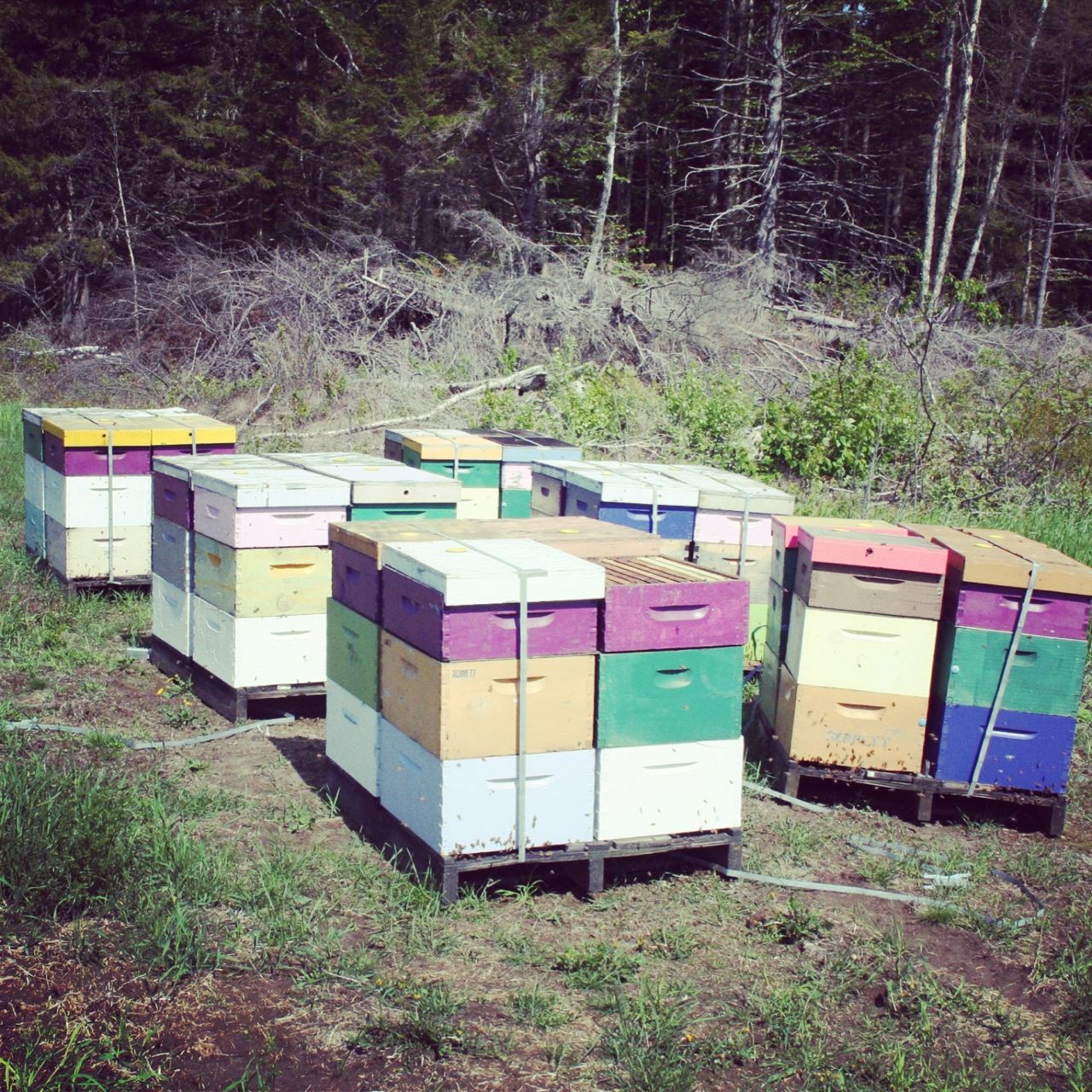
Every year, 3rd-generation wild blueberry farmer Greg Bridges will watch for bloom, set up bear fencing around the bee yards in his fields in Washington County, Maine, and for three weeks keep an eye on the weather and wait. Early May is a very important time for wild blueberry farmers in Maine. This is when migratory beekeepers move tens of thousands of bee hives into farmers' fields to perform the invaluable service of pollinating their crop just as it is flowering.
This spring, even with a few days of rainy cold weather that kept the bees in their hives, Bridges thinks the crop looks good, maybe as good as last year's above average harvest, but he's not making any "official" predictions. As far as Bridges is concerned, Mother Nature has the final say on yield.
"There was good weather last summer during the prune cycle. Not too much rain and plenty of sun. We had a good snow cover on this year's crop last winter. The spring was fairly dry up until last week. This along with a good number of flowers showing on the plants gives a good potential for a good crop."
Nearly 85 percent of the world's supply of Maine's iconic crop comes from Washington County, where families have been farming the land since the early 1800s.
Tony Jadczak, the State of Maine's Apiarist and Bee Inspector, indicated nearly 70,000 hives of honey bees were used in Maine in 2012, which is a record. In 1982, a little over 11,000 hives were contracted, and by 2002 about 50,000 hives.
Karen and Lincoln Sennett owners of Swan's Honey delivered 2000 colonies to wild blueberry fields in Maine this past May, including 148 to Bridges. They delivered approximately the same number last year. Lincoln said additional factors responsible for the increase in pollinator demand is some acreage has been brought back into production, and the perception that having more hives acts as additional insurance against a wet spring pollination season.
Hive rental is one of the biggest and increasing costs for fruit growers. The size of a colony for pollinating wild blueberry fields is two hive bodies, each with 8-10 frames of bees and brood, for an average rental cost of $100 - 115. This is an increase of $5 over last year and $25 over 5 years.
As for a shortage in honey bees, Bridges at least has not noticed one. "I have never had trouble getting hives. The price keeps going up but there has not been a shortage," he said. Like an experienced beekeeper I spoke with, Bridges believes the situation earlier this year regarding the shortage of managed honey bees to pollinate California's almond crop is largely contributed to the industry expanding faster than the number of hives available to accommodate it (something growers were supposedly warned by commercial pollinators of years ago, but neglected to pay attention to).
Commercial Bumble Bee
Research conducted in 2002 at the University of Maine indicates that a commercially available bumble bee, Bombus impatiens, is an excellent pollinator of the wild blueberry crop, and a good alternative to currently available pollinators. University of Maine Wild Blueberry Specialist David Yarborough, is aware of some use of bumblebees, mostly for supplementing the honey bees.
"There are a few individuals who are using just bumblebees if they have not ordered their honeybees early enough. There are no inspections or permits required for bumblebees so I do not have an accurate figure but I expect it is in the hundreds, but I have no way to confirm this. The bumblebees are much more efficient pollinator [sic] than the honeybees and will work in cooler and wet weather but there are only a few hundred in the quad vs. a workforce of 20,000 for the honeybee hive, so the honey bee makes up for their inefficiency with higher numbers when the weather is good."
Honey Bee Health and Native Bees
According to the U.S. Department of Agriculture (USDA), one mouthful in three of the foods you eat directly or indirectly depends on pollination by honey bees. In May 2012, the USDA and the U.S. Environmental Protection Agency released a report on honey bee health. The report states that there are multiple factors playing a role in honey bee colony declines, including parasites and disease, genetics, poor nutrition and pesticide exposure.
Last year Frank Drummond, Wild Blueberry Entomologist at the University of Maine, received a $3.3 million towards a grant-funded regional study of native bees.
"Native bees have been here since the melting of the glaciers and are a natural and permanent aspect of the landscape, but they are poorly understood. With the uncertainty and loss of honey bees, the likelihood rises for continued price increases. Some growers already rely upon native bees but also supplement this natural pollination force with commercial bees. Some growers, however, are unaware of the value of native bees."
Bridges, for his part, is aware of the benefit of local bees, but also sees the value in commercial hives trucked up from Georgia.
"Warm temps and strong hives can lead to better crops. If the hives show up in a weaken condition the hive will not do the job. By the time the hive gets it strength back the flowers will have gone by. Local bee hives can be quite light coming in to the fields. When the (commercial out-of-state) hives leave after pollination they have gained a lot of weight. We use to use a set of weight scales under one of the hives to see this gain. Some hives could gain 30 to 80 pounds. This means everything. I think there is a benefit to the Maine farmer having southern bees. The hives are stronger since they did not have to battle a long Maine winter."
With a widely reported decline in the world's honey bee population, relying on native pollinators - honey bees and bumble bees - may not be optional in the future.